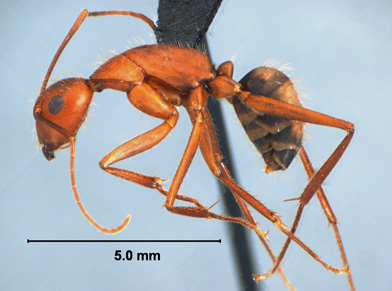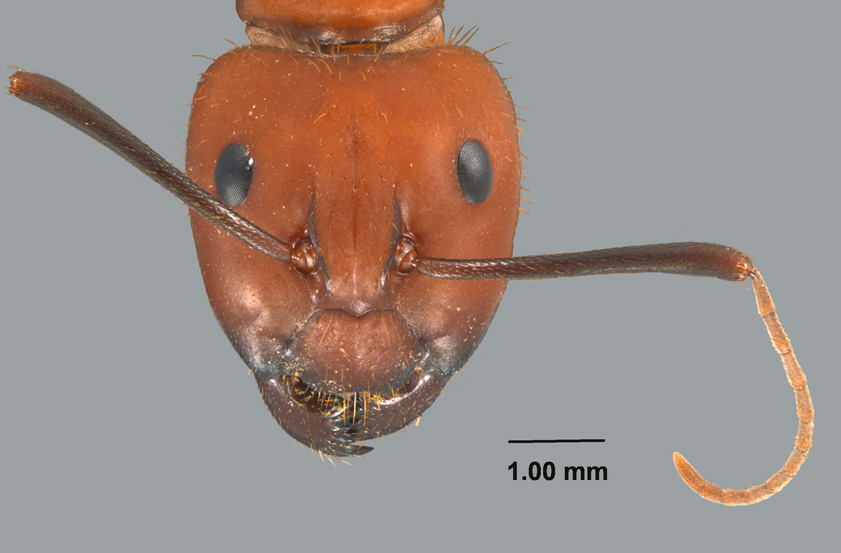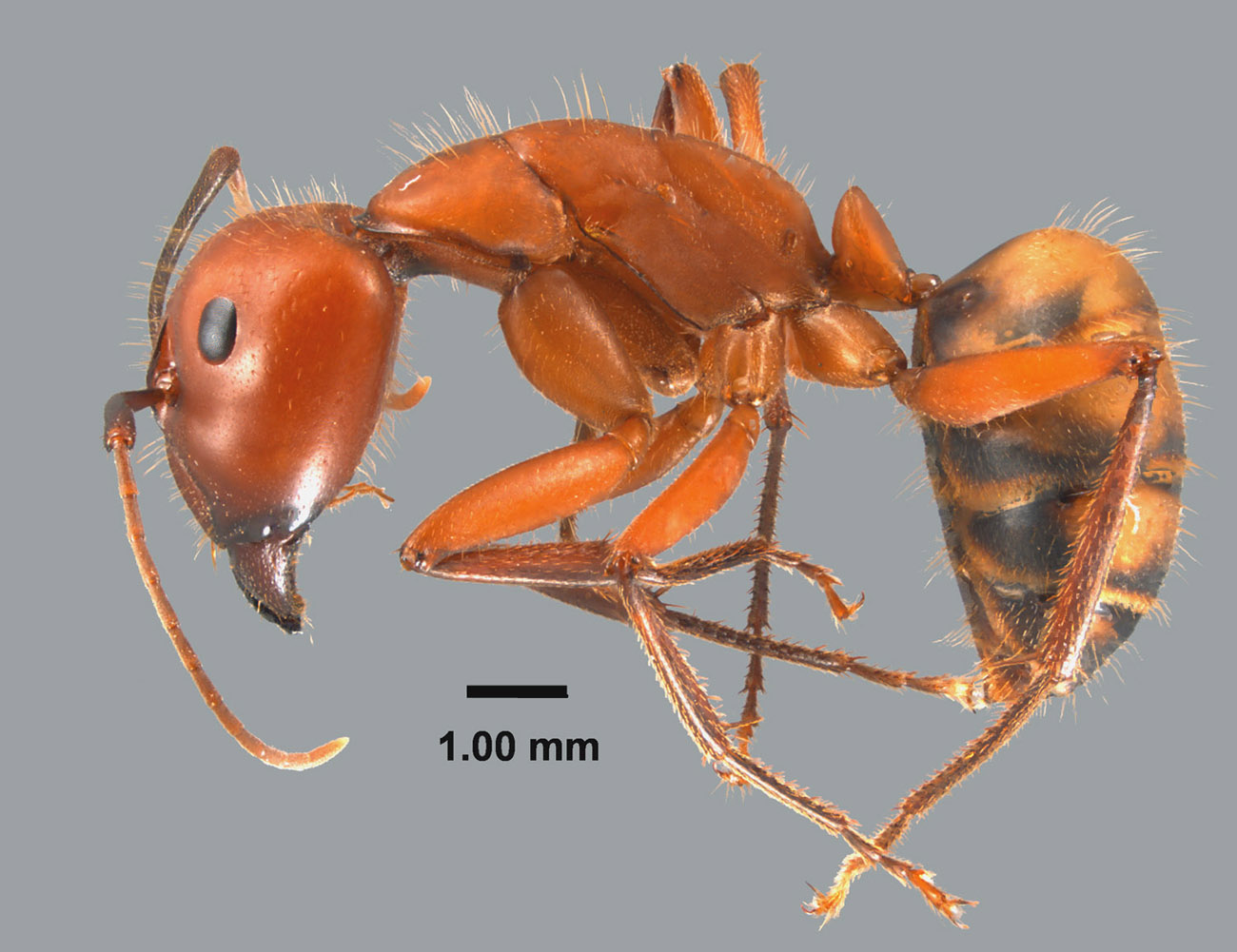Subfamily FORMICINAE |
|
 |
 |
Camponotus socius Roger, full face view of a minor worker. Notice the numerous erect hairs on the occipital region of the head and the very long antennae. |
Camponotus socius Roger, profile view of a minor worker. This a beautiful, hairy, opaque, ant with a distinctly colored gaster. |
Camponotus socius Roger, full face view of a major worker (click image to enlarge). |
Camponotus socius Roger, profile view of a major worker (click image to enlarge). |
Ants in the genus Camponotus are collectively known as carpenter ants because some species nest in wood, including man-made structure. This genus includes some of the largest and most common ants in the world, and they are found in all biogeographical regions (Bolton, 1995). More than 900 species of Camponotus are known worldwide, with 50 species reported from the United States (Hanson and Klotz, 2005), and 20 species found east of the Mississippi River (Deyrup, 2003; Smith, 1979). Species in this genus are variable in size with workers ranging in size from 3 to 15 mm or more in length and queens (also referred to as females) of some species attaining a length of 19 mm or more. Many species are polymorphic. Workers have a 12-segmented antenna that lacks an apical club. Antennal fossae do not touch the posterior border of the clypeus. Ocelli are not present on the heads of workers. The workers of most species have an indistinct metanotal suture between the promesonotum and the propodeum, although this suture is present in C. sexguttatus and some members of the subgenus Colobopsis. Those species that lack the obvoius and deep metanotal suture have the shape of the alitrunk in a smoothly curved arc (as seen in profile). C. socius is in the subgenus Tanaemyrmex, which differs from the other carpenter ant subgenera by having a median carina present on the clypeus. Camponotus socius is an average to large sized ant ranging in size from about 6.5 to 11 mm in overall length. This species is very distinctive from any other carpenter ant found in this area and can be recognized by the color with the banded gaster, the long antennae, and the numerous long erect setae found on the entire body and head (but not the scapes, as in C. floridanus). This ant occurs in the southern portions of both AL and MS and seems to prefer somewhat sandy soils where they make their nests. Nests may also be in rotting logs. Although active during the day, this species is more active nocturnally. |
|
LINKS AntWeb Images Nest architecture: http://www.pubmedcentral.org/articlerender.fcgi?artid=1283890 |
|




